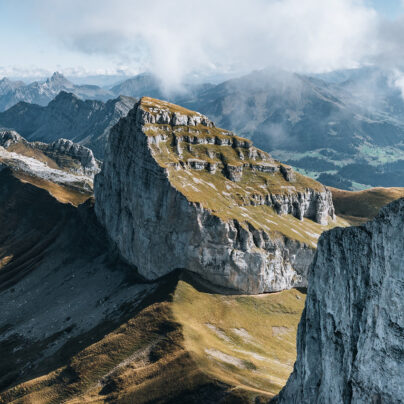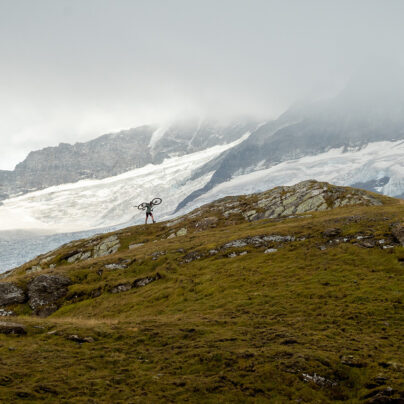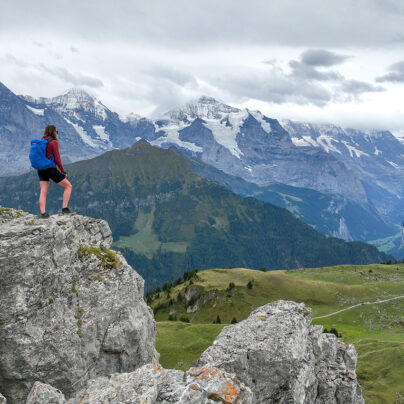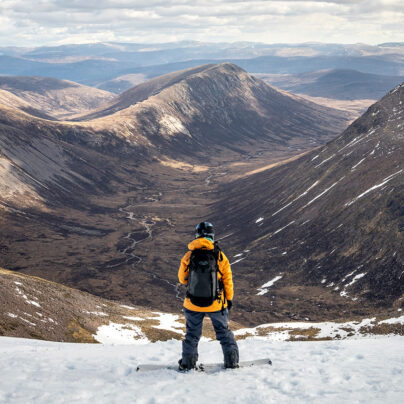Iceland Chaos
Climbing in Iceland
Written by Raphaël Fourau // Translation by Vanessa Beucher
Photography by Raphaël Fourau & Thomas Vialletet
The wind has been battering our tents since our arrival on the island a few hours ago. The thought of getting out of my sleeping bag and abandoning our last stronghold against the cold is hardly enchanting, but there’s no other option. Wedged between the ocean and an imposing rock massif, one of the most remote climbing spots of the planet awaits out there. In the very heart of Viking territory, at the north-east tip of Iceland, Vestrahorn is probably the most incredible site we have ever seen. We’re excited, despite the wind and cold, and ready to take on whatever challenges it holds. This time, I believe we might just have found what we came for: a fresher approach to climbing. Getting away from well-worn trails, considering our climbing with a new perspective, leaving a large part to the unknown. This makes our adventure daring, giving ourselves to fate’s shadows. Iceland will not allow itself to be tamed easily. The island is well-known among hikers, photographers, surfers, and nature lovers, but not much among climbers. Whether it be capricious weather or an absence of significant cliffs, it does not really matter; we are here.
Our arrival at Keflavik airport had a timeless quality to it, bathed in a stunning damask dawn glow. It was a photographer’s dream, that had been quickly obliterated by an unceremonious return to reality when the airline lost most of our luggage. There we were, stuck in Reykjavik for days, wandering the streets and bars. Low, despondent. We told ourselves we had to fight back, with or without luggage, so we hit the road. Faces stuck to the windows of our four-wheel drive, we finally discovered the Iceland we had been dreaming about. The Earth steams and bubbles from every pore, rain blending with a vast, opaque haze. Glaciers stretch from the curves of the road and die in the ocean. Everything seems surreal and scaleless; a fragile, naturalistic balance in which volcanoes and glaciers, fire and ice, coexist.
Our trip is endless day. June means to lowest chance of rain, but also continuous light. It is a precious advantage which allows us to climb until exhaustion. After those first few frustrating days, our first destination, the Hnappavellir cliff is truly bucolic. We switch from one area to the other, trying as many routes as we can; the only limit is the skin on our fingers abraded by the harsh basalt. Hnappavellir is one endless basaltic tongue, undulating between ten and thirty metres high, several kilometres long. This is joy.
In the very heart of Viking territory, at the north-east tip of Iceland, Vestrahorn is probably the most incredible site we have ever seen. We’re excited, despite the wind and cold, and ready to take on whatever challenges it holds.



We improvise makeshift harnesses and share the ropes. It does not really matter, as long as we climb. We quickly spot significant lines, routes which seem harder than others. We succumb to temptation, leaving comfort zones to push limits. Alternately, we climbers devote ourselves to our respective projects: demanding slabs, on which each placement is carefully considered, balance always precarious.
As most of our luggage is still wallowing in the hold of a plane somewhere, creativity is called for. We improvise makeshift harnesses and share the ropes. It does not really matter, as long as we climb. We quickly spot significant lines, routes which seem harder than others. We succumb to temptation, leaving comfort zones to push limits. Alternately, we climbers devote ourselves to our respective projects: demanding slabs, on which each placement is carefully considered, balance always precarious. Climbers fall then repeat the same moves, attempting to find the body language which will allow them to unknot the score. Smiles resurface: we are in our element. The setting is totally unknown to us, but the rules remain the same – we know them.
However, we are soon facing the realities of climbing in Iceland. The cold and humidity force us to carefully handle resting periods between our attempts: leaving time enough for the body to recover, but not getting too cold so as to avoid numbness in the fingers. The bottom of the routes is sheer swamp, the ocean not far away, drowned in the horizon. Florence and Gérôme are the most experienced climbers, they are used to this exercise in adaptation. Towards the end of the afternoon, they both send the route they chose at the beginning of the day. A solid 8a+ repeated only a few times. As a wink to fate, it is at this very moment that Thomas and Danielle show up with our bags, dropped a few minutes earlier by a passing bus. We enjoy the comfort of our warm clothes. It is already late, but climbing at this latitude has a surreal quality. Continuous daylight propels us in a daze. Gérôme takes advantage and sets off to open an unclimbed route. He quickly spots the movements. Barely back on the ground, he announces that he is going to attempt to send it tonight. It is 10 in the evening, maybe later. It does not matter, I run to my static rope. A few minutes later, Gérôme is clipping the belay.
Later, we meet our Icelandic friends in a wooden hut, hand-built by them at the bottom of the cliff. Among them, Eyþór Konráðsson and Valdimar Björnsson, two Icelandic climbers, active in the development of climbing on their island. Valdimar is keen on showing us one of his projects: a route he has been working on for several years. Gérôme is the only one who is able to take up such a challenge. The day has been exhausting, and his fingers are swollen, scratched, and bloody. But no matter what it takes, the temptation is just too strong. The next day, he puts on his climbing shoes, ropes himself up and sets off on the route. One attempt leads to another. Tension mounts. All the climbers are gathered at the bottom of the route, encouraging them. Gérôme eventually sends the route in one, final push, freeing ‘Kamarprobbi’, which becomes the hardest route on the island to this day. The conversations with the locals are amazing, their motivation truly impresses us. One evening, Eyþór tells us about a remote boulder spot located at the south-east tip of the island. The site is still confidential, there is no existing topo, but Eyþór meticulously lists all the rocks. More than two hundred of them have already been opened, but potential remains huge. Our eyes flicker. We have already heard about this boulder spot, the Vestrahorn Chaos.



We follow Eyþór’s four-wheel drive for more than an hour towards Höfn, a remote fishing village where we stop at a hot spring and eat a warm meal of Icelandic lobster. By the time we arrive at Vestrahorn, it is the middle of the night, but daylight is ever present, as is tiredness. Since the beginning of the trip, we have been pushing our limits, and the cold is taking its toll on our mood. But the unstable weather taunts us, and we know we have to make the most of each climbing day, forgetting the pain of worn fingers and sore muscles. Nobody talks in the four-wheel drive, we are truly exhausted and secretly dream about a comfortable campground with running water. The four-wheel drives race on the dirt road then suddenly turn towards the ocean. The vision that greets us is surreal; our minds have a hard time fully realising it. We are now driving right through the middle of the ocean, crossing a laguna stretching over a few hundred metres. Nobody talks, but faces speak for themselves. No boulder in the horizon, only the ocean as far as the eye can see and a misty, severe-looking massif.
I have a hard time believing that a four-star campground is awaiting us somewhere in this setting. We hit the road again on a chaotic dirt road before spotting other vehicles parked at the top of a hill. Not far away, a group of people are gathered around a huge stone chimney, remains of Icelands Viking past. On the other side of the hill, the expected show is there, a sprawling chaos of boulders surrounding us. We pitch our tents right in the middle of nowhere and set off to meet the Icelandic climbers grouped around the fire. A comfortable campground can wait. We have a big day tomorrow: we’ve just found what we came for.
Raphaël Fourau, Thomas Vialletet and Vanessa Beucher are climbers, skiers and explorers who work together under the collective of BartAs Productions, specialising in climbing photography, films and stories.
Website: bartasproductions.com
Instagram: @bartasproductions
Instagram: @raphaelfourau








